Yedikule Istanbul | The Seven Tower Fortress
Yedikule Fortress, situated in the historic heart of Istanbul, stands as a significant marker of the city's rich and diverse past.
Known as the Fortress of the Seven Towers, this imposing structure has witnessed the rise and fall of empires, playing a crucial role in both Byzantine and Ottoman periods.
Yedikule Fortress holds a distinctive reputation as the "scariest fortress in Istanbul." Once a formidable military stronghold. Its robust walls and towering battlements have silently observed the unfolding of history, shaping the city's narrative over centuries.
Today, Yedikule Fortress remains one of Istanbul’s most evocative landmarks, serving as a museum, preserving a wealth of memories within its ancient walls.
History of Yedikule Fortress
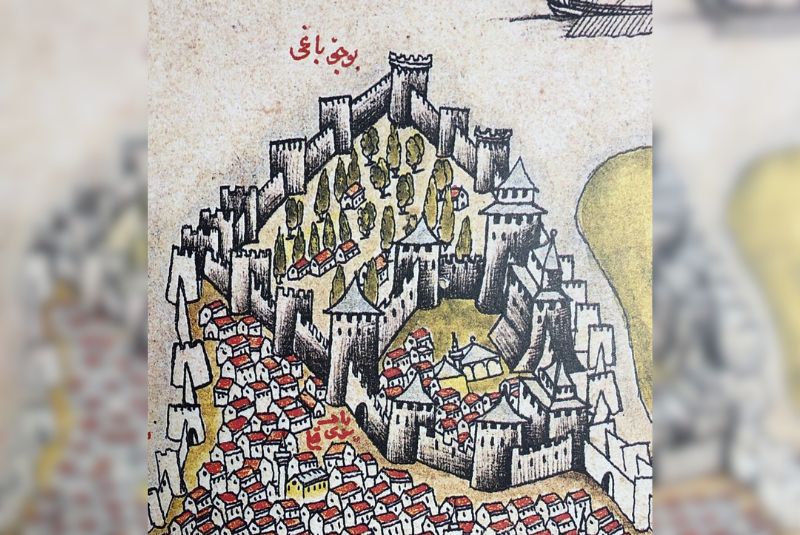
During the Byzantine era, what is now known as Yedikule was referred to as Heptapyrgion. The origins of Yedikule Castle date back to the Eastern Roman Empire, particularly during the reign of Theodosius II (408-450 AD), when the initial city walls were erected—a significant portion of which still stands today. As attacks on the Byzantine capital increased, defensive measures evolved, resulting in the fortification taking on a three-tiered structure. An additional level was added to the walls, fortified with a moat and an outer secondary wall, designed strategically to deter incursions. The construction of the Yedikule walls not only aimed to bolster defense but also delineated the boundaries of the area now known as Yedikule.
| Related: Turkey Historical Sites - Discover the Rich History of Turkey
Commissioning and the Triumphal Golden Gate (413-439 AD)
Yedikule Fortress, renowned for its historical mysteries and tales spanning centuries, was commissioned in 413 AD. This fortress, an integral part of the city's protective walls, was meticulously designed under the patronage of Theodosius II, an emperor known for his profound appreciation of architecture. Over time, grand gates were added to augment the fortress walls, with the most illustrious being the Golden Gate, also known as the Triumphal Arch.
The Golden Gate, erected in 439 AD upon the completion of the fortress, served as a monumental entrance through which victorious Byzantine emperors ceremoniously entered the city following successful military campaigns. Its fame derives from the golden embellishments adorning its doors, added to commemorate a significant imperial victory in 425 AD. Despite later modifications to fortify the city against Arab sieges, the gates retained their strength until the era preceding the Crusades.
The Mese, Constantinople's principal thoroughfare, originated from Sultan Ahmed Square and bifurcated around Esekapı. This ceremonial avenue held great symbolic importance, intersecting with the Thracian thoroughfare Egnatia at the site of the Golden Gate, once known as Porta Aurea. It was here that Byzantine emperors conducted coronation ceremonies and celebrated triumphs upon returning victorious from military campaigns.
| Suggestion: Dolmabahce Palace - Where Opulence Meets the Bosphorus
Ottoman Expansion and the Reinvention of Yedikule (1458)
After the conquest of Constantinople and the fall of the Byzantine Empire to the Ottoman Empire, Sultan Mehmed the Conqueror initiated extensive repairs and reconstruction of the city's fortifications. Skilled craftsmen and experts were gathered from across the empire to undertake this monumental task, establishing settlements along the coastline stretching from the Golden Horn to Topkapi and Yedikule.
During this period, in 1458, three towers were integrated into the existing fortifications, utilizing the foundations of the ancient Golden Gate columns. Yedikule evolved into an inner citadel, structured around three towers, forming a pentagonal inner fortress within the city walls.
Function and Notable Towers of Yedikule Fortress
The towers encircling the pentagonal structure of Yedikule Fortress include the Flag Tower, Armory Tower, Young Osman Tower or Southern Pylon (the tower where Sultan Osman II was killed), Sultan Ahmed III Tower (Pastorama Tower), Treasury Tower (Millet Tower), Dungeon Tower (Inscriptions Tower), and Top Tower (Girls Tower).
Originally used during the Byzantine era as an observatory, prison, and site of executions, these towers in the Ottoman period served multiple functions including as prisons, execution chambers, treasuries, armories, and granaries. Yedikule Fortress, fortified with artillery, was not only crucial for defending the city but also housed important government documents and valuable possessions, serving as a dungeon for political prisoners.
Throughout Ottoman rule, Yedikule Fortress detained prominent statesmen and ambassadors from nations with which the empire was at odds. It is recounted that these prisoners sometimes enjoyed relative freedom within the castle walls and even lodged in nearby residences.
| Read more: Topkapi Palace - Everything You Should Know
Legends and Restorations
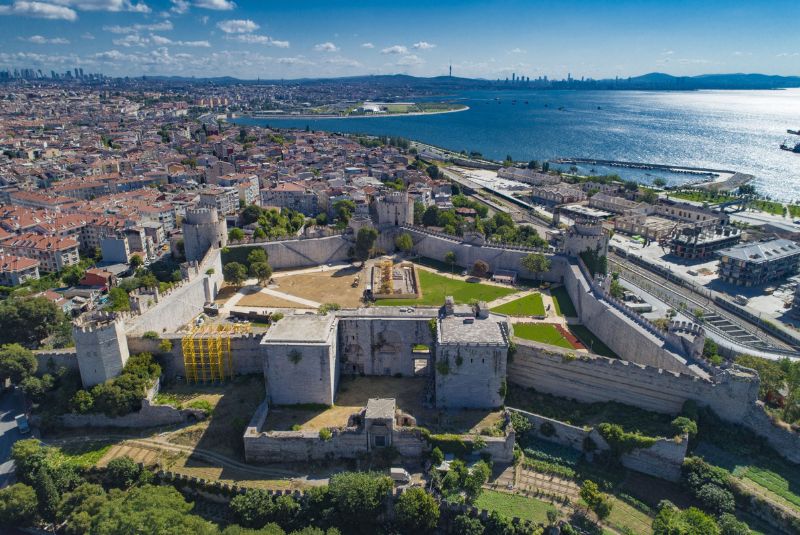
The Byzantine tower originally known as "Pastorama Tower," situated north of the Golden Gate columns, was originally square-shaped but suffered damage from an earthquake. In 1724-1725, during the reigns of Sultan Ahmed III (1703-1730) and Sultan Osman III (1757-1754), it was rebuilt in an octagonal form and subsequently renamed "Sultan Ahmed III Tower." Initially used to house the treasury and precious documents of the Ottoman Empire, it later became known as the "Burning Mansion" after a nearby fire damaged it; however, it was later restored.
The Flag Tower, positioned above the entrance gate, was renowned for its strength and housed guard rooms on either side, where soldiers maintained vigilance under the flag flying atop it. The Dungeon Tower, or Tower of Inscriptions, served as a prison, notable for the European prisoners' writings on its walls. This tower, featuring sections made of wood, endured damage from a fire, housing the infamous Serpentine or Bloody Well within its confines.
Yedikule Fortress and its Dark Tales

The legend surrounding the Bloody Well within the Inscription Tower suggests that it was used for executing prisoners, whose heads were then tossed into a tunnel leading to the Sea of Marmara. This grim location has witnessed numerous historical events. Muslim prisoners were confined in the towers flanking the Golden Gate, where inscriptions and graffiti, akin to those found in the Tower of Inscriptions, abound.
One of the earliest and most prominent figures imprisoned here after the conquest was Chaderli Hill Pasha and his sons, incarcerated just nine days post-conquest. Yedikule's dungeons have become the stuff of songs and legends, fueled by tales of foreign political prisoners and important Ottoman statesmen enduring centuries of imprisonment and torture within its towers. Much speculation and folklore concerning Yedikule revolve around the Marble Tower, now a shadow of its former self, originally built adjacent to the Theodosian walls. This tower, with its four floors, served as an execution site and prison during the Byzantine era.
Among the notable figures who met their fate within Yedikule's walls, Sultan Osman II, also known as Osman the Younger, stands out for his brutal murder by soldiers. Others include Çandarlı Halil Pasha and his sons, imprisoned shortly after the city's conquest, as well as Greek emperor Trabzon, David Komnenos and his sons, the last Abbasid caliph Mutawakkil IV, and Crimean Khan Mehmet Giray. The fortress's dark reputation as the "Cursed Black Holes" has spawned countless legends, particularly surrounding the belief that pagan souls were trapped within its depths.
According to one enduring legend, the walls and columns of this coastal fortress were once adorned with gold, silver, pearls, and precious stones by the Emperor Manuel. One room purportedly featured a gold-covered wall that shimmered day and night from embedded jewels, eliminating the need for lamps. Another chamber allegedly housed a crown bedecked with unmatched jewels and stones, surpassing any treasury on Earth. Sadly, the remnants of this coastal fortress likely succumbed to fires and earthquakes in Istanbul, leaving behind only its mysterious legacy in the annals of history and travelogues. Tales of Yedikule have traversed languages and cities, enduring through centuries to capture the imagination even today.
| Discover: Pergamum - Exploring the Ancient City in Turkey
Exploring Yedikule Fortress
Visitors to Yedikule Fortress can expect an immersive journey through history. The fortress's robust walls and ancient structures provide a vivid backdrop for exploring Istanbul's past.
Golden Gate
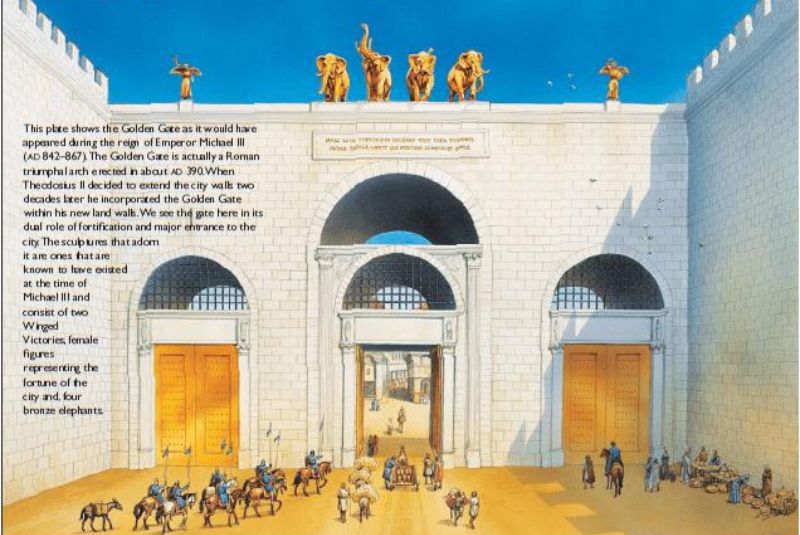
The Golden Gate is the most iconic feature of Yedikule Fortress. Originally constructed as a triumphal arch during the Byzantine era, it was the grand entrance for emperors returning from victorious campaigns. The gate's impressive size and ornate decorations reflect the grandeur of the Byzantine Empire. Visitors can admire its architectural details and imagine the ceremonial processions that once passed through it.
| Discover: Ancient City of Troy - Explore Troy Ruins in Turkey
The Towers
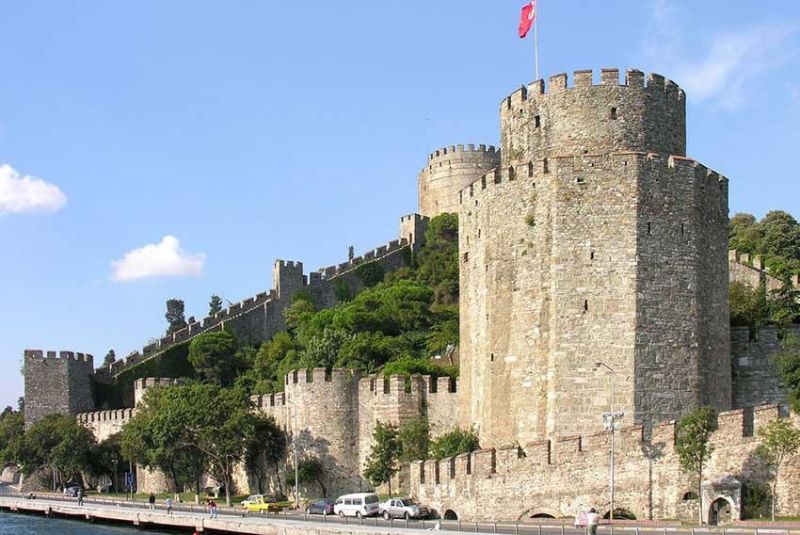
Yedikule Fortress is named after its seven towers, each of which has its own unique history and function:
- Tower of the Princes: This tower served as a prison for Byzantine princes and later Ottoman dignitaries. The dark, narrow cells provide a stark reminder of the fortress's role as a detention center.
- Treasure Tower: Used to store the Ottoman Empire's treasury, this tower symbolizes the fortress's strategic importance in protecting valuable assets.
- Armory Tower: This tower housed weapons and military equipment, essential for the fortress's defense.
- Guard Towers: These towers provided vantage points for monitoring and defense, allowing guards to survey the surrounding area and respond swiftly to any threats.
Dungeons and Prison Cells
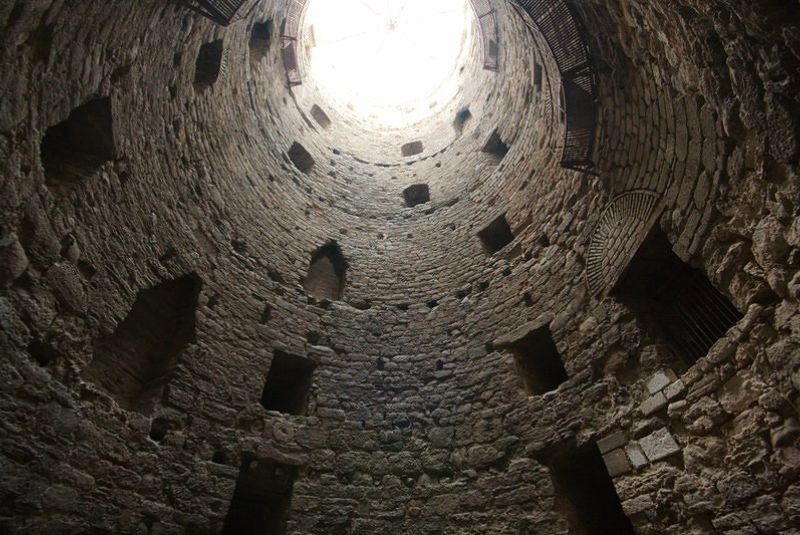
The fortress's lower chambers were used as dungeons and prison cells. These dimly lit, confined spaces give visitors an eerie sense of the conditions endured by prisoners. Historical records indicate that many high-profile captives, including foreign ambassadors and rebellious Ottoman princes, were held here.
Interior Courtyards
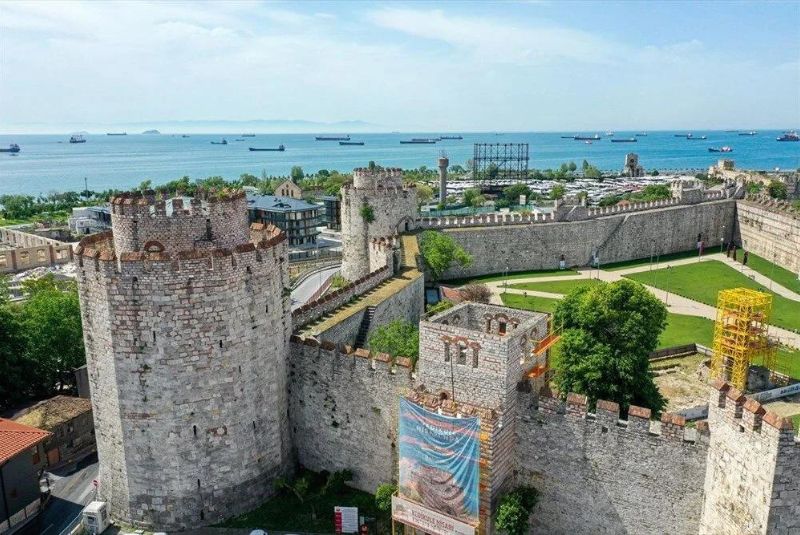
The fortress contains several interior courtyards where various activities took place. These open spaces would have been bustling with soldiers, prisoners, and workers. Today, they provide a tranquil setting for visitors to rest and reflect on the fortress's history.
| Read more: Galata Tower - A Must-Visit Attraction in Istanbul
Yedikule Fortress Location and Access
Yedikule Fortress is conveniently located in Istanbul Fatih neighborhood, accessible via various transportation options:
- Public Transport: Take the tram to Sultanahmet or Aksaray stations, followed by a short walk to the fortress. Buses also serve nearby stops, providing additional travel flexibility.
- Taxi: Taxis are readily available throughout Istanbul and offer a direct route to Yedikule Fortress. Ensure the meter is used or negotiate a fare before starting your journey.
Admission and Opening Hours
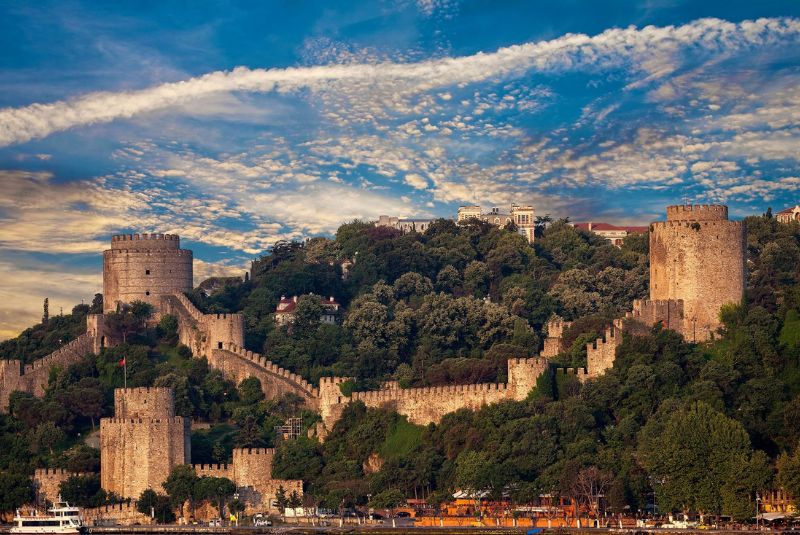
Entry to Yedikule Fortress costs just 5 liras, offering excellent value for the historical insights and experiences it provides. Discounts may apply for students, seniors, and local residents.
Yedikule Fortress is open every day except Wednesdays, from 9:30 am to 4:30 pm. It's advisable to check the official website or local tourism information for any changes to opening times.
| Suggestion: Best Places to Visit in Istanbul at Night
Nearby Attractions
While visiting Yedikule Fortress, take advantage of nearby attractions to enrich your experience:
Blue Mosque (Sultan Ahmed Mosque)

Located just five kilometers from Yedikule Fortress, the Blue Mosque is one of Istanbul's most iconic landmarks. Commissioned by Sultan Ahmed I in the 17th century, its interior is adorned with exquisite blue tiles that give the mosque its name. With its stunning architecture and serene atmosphere, the Blue Mosque attracts visitors from around the world.
Yeni Cami (New Mosque)
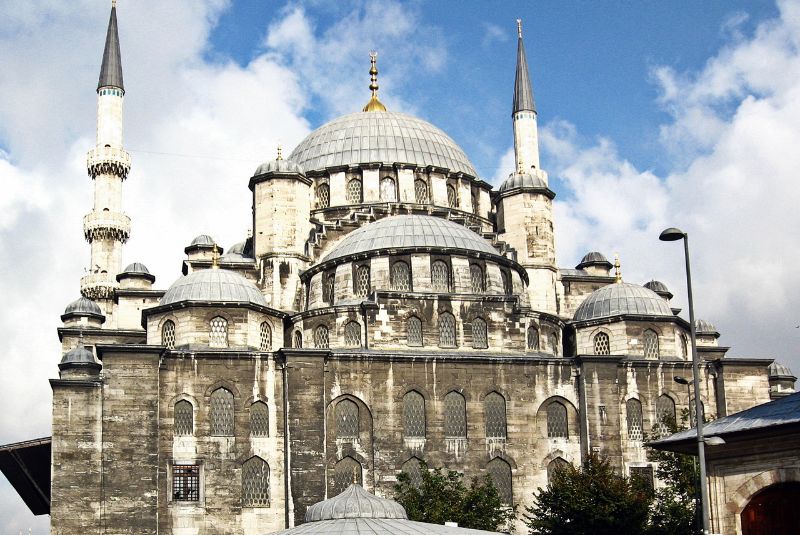
Located in Eminönü, just eight kilometers from Yedikule Fortress, Yeni Cami is a magnificent example of Ottoman architecture. Built in the late 16th century, it features striking domes and two towering minarets. Despite its name, which means "New Mosque," it took over 50 years to complete due to interruptions in its construction. Today, Yeni Cami stands as a testament to Istanbul's rich cultural and architectural heritage.
| Suggestion: UNESCO World Heritage Attractions in Istanbul You Must Visit
Spice Market (Istanbul Spice Bazaar)
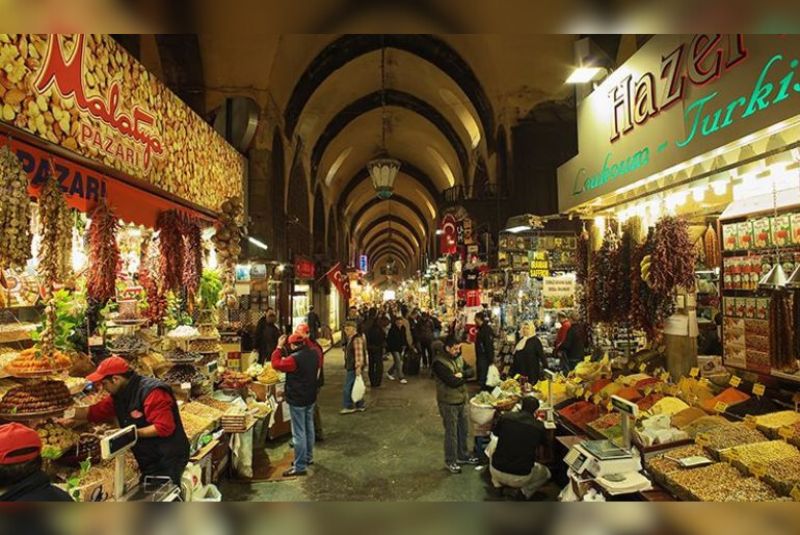
Situated in Eminönü Square, about 10 kilometers from Yedikule Fortress, the Spice Market is a vibrant hub of exotic aromas and flavors. Also known as the Egyptian Bazaar, it dates back to the 17th century and offers a wide array of spices, teas, sweets, and souvenirs. Explore the market's bustling lanes to discover a taste of Istanbul's rich culinary heritage.
Galata Bridge

Spanning the Golden Horn, Galata Bridge connects the European neighborhoods of Karaköy and Eminönü. Originally built in the 19th century, it has become a symbol of Istanbul's unity between its European and Asian sides. Walk along the bridge's lower level to experience lively seafood restaurants where you can savor freshly caught fish while enjoying panoramic views of the Bosphorus.
| Discover: Hagia Sophia Mosque
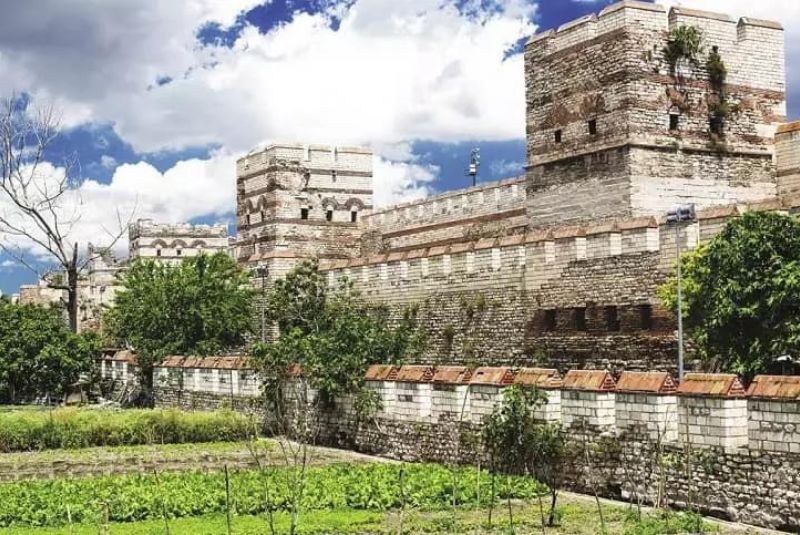
Final Takeaway
Visiting Yedikule Fortress promises a memorable experience filled with historical insights and breathtaking views. Guided tours offer in-depth insights into the fortress's history and architecture, revealing hidden details and lesser-known facts. Don't miss the opportunity to explore this iconic landmark and uncover Istanbul's cultural heritage firsthand.
Share your story!
Comment below and let us know about your Experience.
Your story inspires others!
Comment
Leave a Comment